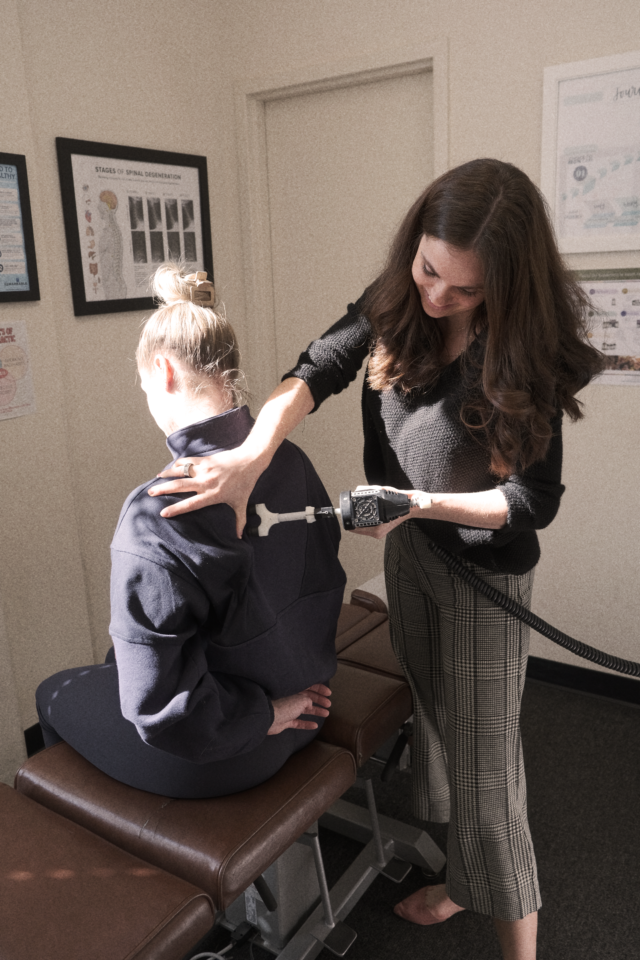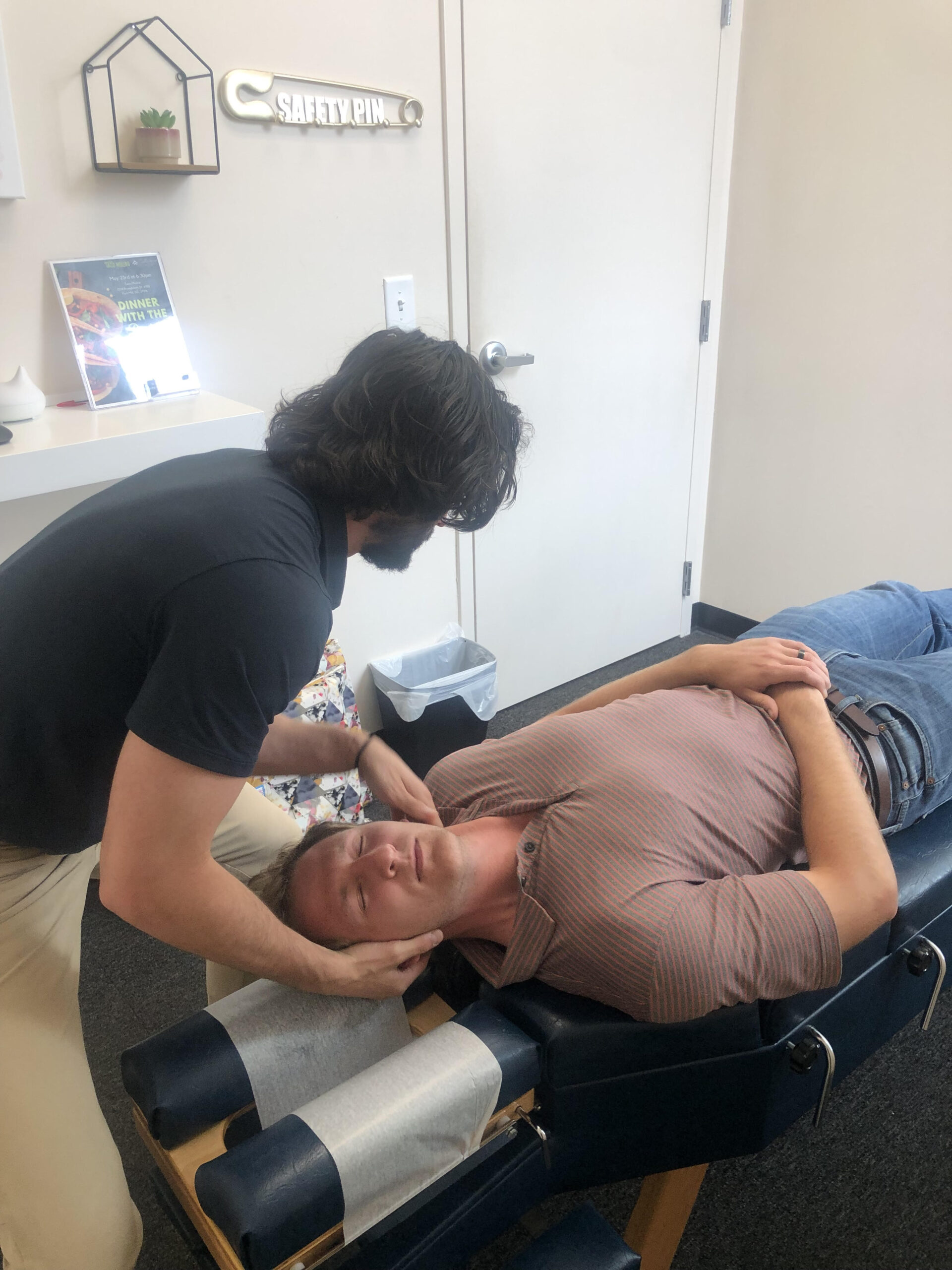Pain in arm is a common condition that affects many people. This type of pain can range from a small and mild ache to a sharp and debilitating pain. In some cases, arm pain is caused by an underlying medical condition such as arthritis, tendonitis, or bursitis. An inflammation or injury can also affect your entire arm, thus resulting in left arm pain or right arm pain.
Other causes of shoulder and arm pain include muscle strain or sprain, repetitive motions such as typing on a computer keyboard or swinging a golf club, pinched nerves due to poor posture, bone fractures, nerve damage, or overuse of the arm muscles.
Signs & Symptoms
Arm pain can range from a minor discomfort to severe and can take different forms, like a stabbing or shooting pain or even just a dull ache. It may come on quickly or slowly, and could be accompanied by other signs based on the cause according to Mayo Clinic.
Symptoms may include the following:
- Tingling
- Right arm pain and numbness
- Swelling
- Stiffness
- Tenderness
- Redness
- Bruises
Types of Arm Pain
Sprain/Injury
Whether you accidentally strained yourself while working out or you slipped up during a big game, any sort of arm injury can be painful and debilitating.
So, the question is: what do you do when you suffer from an arm sprain or injury? While it may not feel like it right away, the best thing to do is stay still for a few minutes and allow your body time to adjust.
Depending on the severity of your injury, this could range from anywhere between 15 minutes to several hours. During this period of rest, make sure that you keep your affected limb elevated above your heart if possible. This will help to reduce pain, swelling, and discomfort.
After this initial period of rest, you may want to apply ice or a cold compress to the injured area for up to 20 minutes at a time. Doing this can help to further reduce inflammation and soreness while also numbing any residual pain that is lingering around.
Tendonitis
Arm tendonitis can be a real pain – pun intended. This condition is common among athletes, but anyone can suffer from it if they don’t take care of their arms properly. Basically, it’s an inflammation of the tendons surrounding your arm muscles that can cause constant throbbing or sharp pains in the affected area.
It’s important to understand what causes arm tendonitis so you can avoid it and its painful symptoms. Repetitive motions are the most common culprit behind this annoying condition, as they put strain on specific areas of your arm over time and eventually lead to irritation in those areas. That’s why athletes like baseball pitchers, tennis players, golfers and swimmers are more prone to this issue.
Another common cause of arm tendonitis is poor posture while working or playing sports. You should always try to keep your arms close to your body, and make sure that you’re not over-reaching or bending them in ways they’re not meant to be moved. Poorly designed tools can also contribute, so if you find yourself using something uncomfortable for an extended period of time, switch it out immediately!
If you start experiencing pain in your arm and suspect that it could be tendonitis, take a break from whatever activity you are doing and give yourself some rest. If the pain persists after a few days, it is best to call your doctor.
Fracture
Arm fractures, otherwise known as broken arms, are one of the most common injuries seen in emergency rooms and clinics across the globe. They can occur when a person falls on an outstretched arm or even during a sports game. If you suspect that you have a fracture, it’s important to seek medical attention right away.
The signs and symptoms of an arm fracture will vary depending on the severity of the injury. Most commonly, a fractured arm may result in severe pain that increases with movement, swelling and bruising around the affected area, numbness or tingling in fingers or toes, deformity, or impaired range of motion. It’s also possible for bone fragments to be visible through the skin in extreme cases.
When it comes to treatment, the first step is to assess the fracture and immobilize the affected arm. Depending on the severity of the break, you may be prescribed a cast or put in a splint to help immobilize your arm while it heals. Pain medications may also be prescribed to help manage pain levels. It’s important that you follow all doctor’s orders for proper healing and recovery.
Arm fractures can be very painful and may take some time for the bone to heal completely. However, with proper treatment and care, recovery is possible, and many people are able to return to their normal activities within several weeks of an initial break.
If you think that you may have a broken arm, it’s important to seek medical attention right away in order to get the best possible outcome for your injury.
Inflammation
Arm inflammation, also known as bursitis or tendinitis, can cause a lot of pain and discomfort. It is caused by an overuse of the arm muscles and tendons, such as from repetitive activities like typing or playing sports. Symptoms include pain, swelling, redness, warmth in the affected area, difficulty moving the arm or shoulder joint, and decreased range of motion.
The most common treatment for arm inflammation is rest. To prevent further injury to your arm, you should stop any activity that causes the pain. In some cases anti-inflammatory drugs may be prescribed to reduce the swelling. If the pain persists, your doctor may suggest injections or surgery to reduce inflammation and promote healing.
Although arm inflammation can be a painful condition, it is important to remember that with proper rest and treatment, it can often be managed successfully. If you are experiencing arm pain and think you may have bursitis or tendinitis, make sure to talk to your doctor for a proper diagnosis and treatment plan.
Bursitis
Arm bursitis is an inflammation of the bursae, small fluid-filled sacs that reduce friction between tissues of the body. It can occur in any part of your body where a tendon or ligament crosses over a bone but occurs most commonly in the arms and shoulders.
The pain associated with arm bursitis can be debilitating, preventing you from performing everyday activities or even sleeping at night. If left untreated, it can lead to long term damage to surrounding muscles and tissue, leading to chronic issues down the line.
If you feel pain while rotating or bending your arms or if they are swollen and red around the painful area, then you may have arm bursitis. Other symptoms include tenderness, burning or aching sensations.
Treatments for arm bursitis depend on the severity of the condition and may include rest, ice packs to reduce swelling, anti-inflammatory medications such as ibuprofen and physical therapy. In more severe cases your doctor may recommend the use of corticosteroids.
If you are experiencing pain in your arms that is not improving with home remedies like rest and ice packs, then it’s time to see your doctor about possible treatments for arm bursitis. Don’t ignore persistent pain! By taking proactive measures now, you can avoid long-term complications down the road.
Causes of Arm Pain
Pain in arm is something that we all can relate to, from the mild achiness of typing too much to the sharp twinges of an elbow injury. But what exactly do each of these pains mean, and how can you tell one type of arm pain from another? Let’s take a look at some common causes of arm pain.
Carpal Tunnel Syndrome
This is one of the most well-known sources of arm pain. It occurs when your median nerve — which runs through your forearm and into your hand — gets compressed by surrounding tissues or bones. Symptoms include tingling, numbness, or burning in the thumb, index finger, middle finger, and half of the ring finger on the affected arm. Treatment often includes rest, wrist splints, medications, or surgery.
Tennis Elbow
This condition is caused by repetitive use of the muscles in your forearm that help you grip and rotate your wrist — usually from activities like tennis, weight-lifting, or using tools. Symptoms include pain radiating from outside of the elbow to into the forearm with movement or activity. Treatment can include rest, stretching and strengthening exercises, bracing or taping the elbow joint (or wearing a counterforce brace), and medication if needed.
Frozen Shoulder Syndrome
Also known as adhesive capsulitis, this condition causes stiffness and loss of motion in your shoulder joint due to thickening of its capsule — which is the soft tissue that wraps around and helps stabilize your shoulder joint. Symptoms include pain in the shoulder and arm (particularly with movement) and a gradual loss of motion, ranging from mild to severe. Treatment can involve physical therapy, medications, or even surgery in some cases.
Rotator Cuff Injury
The rotator cuff consists of four muscles and tendons that help keep your shoulder joint stable while allowing it to rotate freely. A rotator cuff injury occurs when these tendons become inflamed or torn due to overuse or trauma — often from activities like throwing or lifting heavy objects.
Symptoms may include pain at rest, pain when raising your arm overhead, weakness in the affected arm, and difficulty sleeping on the affected side. Treatment typically involves rest, physical therapy, medications, or in some cases surgery.
Tendonitis
This is an inflammation of the tendons — the tissues that connect muscle to bone — and can be caused by overuse or trauma. Symptoms include pain at rest, pain when lifting the arm overhead or reaching behind you, weakness in the affected arm, and difficulty sleeping on that side.
Treatment typically involves rest, physical therapy exercises to strengthen and stretch surrounding muscles, medications like NSAIDs for pain relief and/or corticosteroid injections, and in some cases surgery.

Treatment for Arm Pain
If you are experiencing pain in arm, you are not alone—it is a common issue that can manifest from many different sources. Arm pain can be caused by an injury or medical condition such as carpal tunnel syndrome, tendonitis, arthritis, bursitis, or nerve damage.
Whatever the cause of your arm pain, there are treatments available to help alleviate the symptoms and get you back on track.
- Rest: Taking time to rest is one of the most important things you can do for yourself if you’re dealing with arm pain. Allow your body and mind to recover by taking it easy and avoiding strenuous activities like exercising or manual labor.
- Cold Therapy: Applying cold packs directly to the area of pain can help reduce swelling and inflammation, leading to reduced discomfort.
- Heat Therapy: If cold therapy isn’t doing the trick, you may want to try heat instead. Applying a warm compress to the area of pain can help relax tense muscles and improve circulation, leading to relief from arm pain.
- Exercise: Exercising is one of the best ways to reduce arm pain in the long-term. Regularly stretching and strengthening your arm muscles can help keep them flexible and strong, preventing future aches and pains.
These strategies should be able to find some relief from your discomfort. Talk to your doctor or physical therapist if you have any questions about which treatments might work best for you.
Corrective Exercises
Are you suffering from arm pain and are looking for relief? You may be surprised to learn that corrective exercises could be the key to addressing your nagging pains.
Here’s a look at some of the most effective corrective exercises you can do to get rid of arm pain:
- Seated Biceps Curls
Start in a seated position with your back straight and feet flat on the ground. Take hold of two light dumbbells or hand weights, then curl them up toward your chest one at a time. Make sure to maintain control over each rep, keeping your elbows close together throughout the movement. - Shoulder External Rotation
Begin by standing or sitting in an upright posture with arms bent at 90 degrees and palms facing inwards. Take a light weight or resistance band and rotate your arms outwards, keeping the elbows at shoulder height. Focus on keeping your shoulders down and away from your ears during this exercise. - Bent Over Rows
For this exercise, start by standing with feet hip width apart and knees slightly bent. Bend over to form a 90 degree angle with your upper body while holding onto two dumbbells or weights. Engage your mid-back muscles as you pull the weights up towards your chest, then slowly lower them back to starting position. - Chin Tucks
This exercise helps to improve posture, alleviate neck pain, and reduce tension in the shoulders and arms. To perform this exercise, start by sitting or standing up straight with your chin tucked in towards your chest. Keep your eyes looking forward while you roll the shoulder blades back and down, making sure not to hunch over as you do so. - Shoulder Blade Squeezes
This exercise is great for improving posture while also helping to alleviate arm and shoulder pain. To perform this exercise, sit or stand up straight with your arms at your sides. Reach behind you and squeeze your shoulder blades together as if you were trying to pinch something between them. Hold for 10 seconds before releasing and repeating for several reps. - Thoracic Rotation Stretch
This stretch is great for alleviating upper back pain and tension in the shoulders and arms caused by poor posture or sitting too long in one position. To perform this stretch, start by lying flat on your back with both knees bent and feet flat on the floor. Keep one hand reaching out straight while using your other hand to pull that knee towards the opposite side of the body, rotating it slightly so that you feel a nice stretch in the upper back and shoulders. Hold for 10 seconds before switching sides and repeating.
By performing these corrective exercises regularly, you can help alleviate right arm pain from shoulder to hand and gain strength in your upper body.
Don’t Suffer Through Arm Pain Any Longer, Say Hello To Our Chiropractor!
Does your arm ache persist no matter what you do? Don’t wait another day in discomfort! Collective Chiropractic utilizes the latest techniques to help you find relief from your arm pain. We will create a personalized plan that is tailored to your needs and goals.
Make an appointment today and begin enjoying life without the burden of hand and arm pain! We guarantee that our experienced team of chiropractors will provide caring and professional care that will make you feel better than ever in no time.
Professional Chiropractic Care From Collective Chiropractic!
At Collective Chiropractic, we’re dedicated to improving your quality of life with personalized care and attention. Our experienced team of professional chiropractors are here to help you achieve the best possible outcome for your health and well-being. With our state-of-the-art equipment and techniques, we can provide you with the highest level of care possible.



